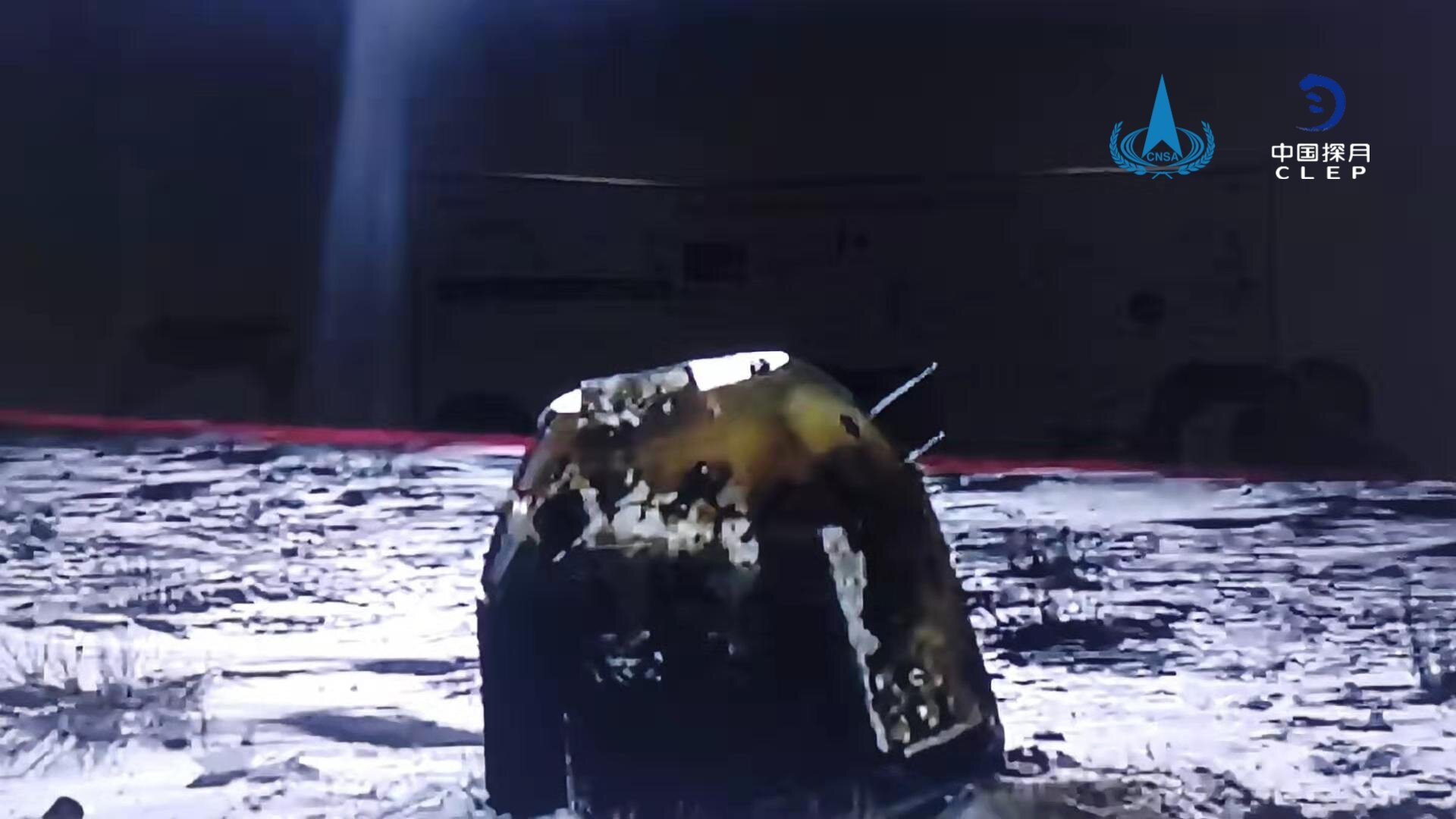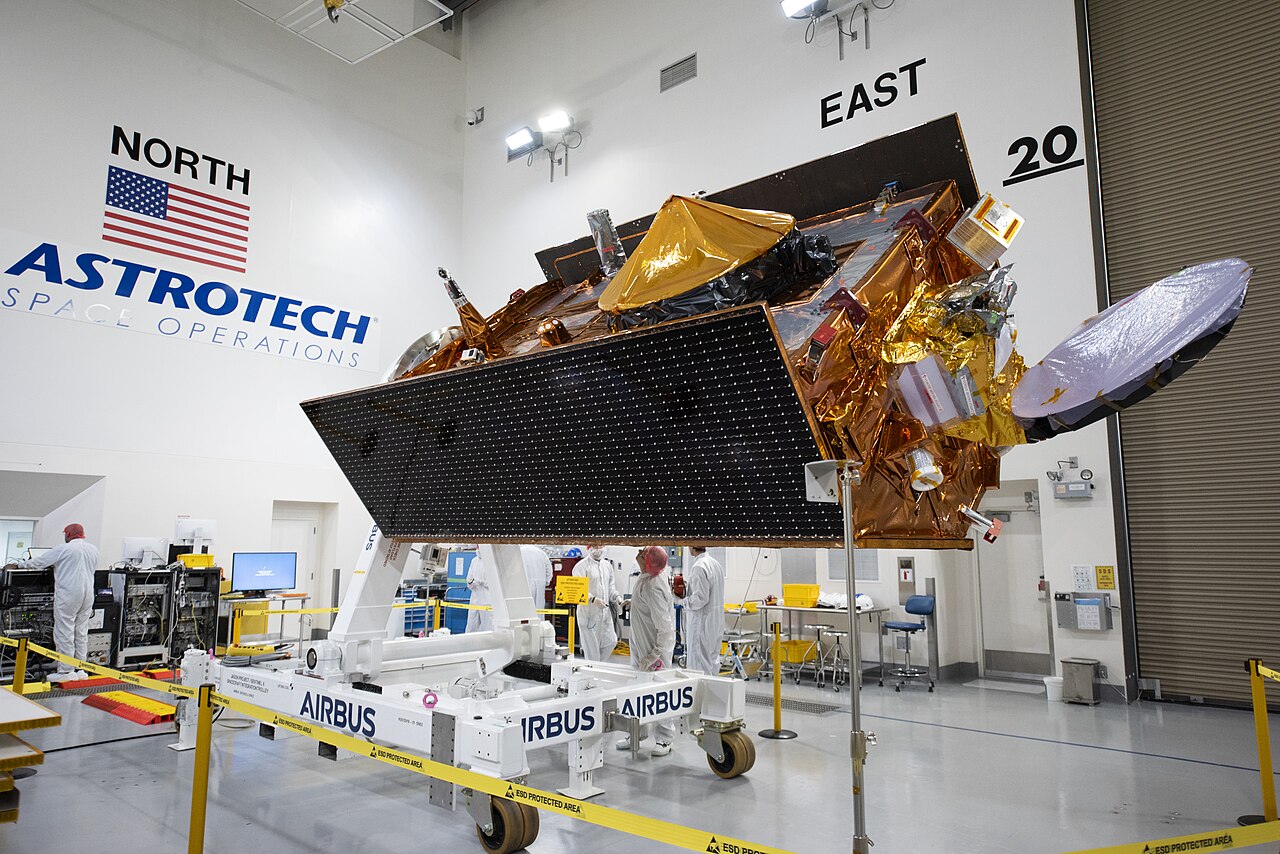PICTURED: The Chang’e-5 return module sits on the snow-covered ground in Inner Mongolia, smoldering from its reentry into Earth’s atmosphere.
INNER MONGOLIA, China. December 17th, 2020. At 1:59 on December 17th, Beijing time, the lunar exploration project Chang’e-5, returned to Earth carrying the first lunar soil samples since 1976, and marking the first Chinese sample-and-return space mission.
Going 11 kilometers per second, the return module fell to earth in the Chinese province of Inner Mongolia, where authorities collected the sample box containing around 2.2 kilograms of lunar regolith for transport to Beijing.
The original launch contained 4 modules: a spacecraft, a descent vehicle, a digging robot, and a return module. Together they traveled out of the atmosphere on a Long March 5 rocket on the 23rd of November, and needed five days to reach the Moon.
There the descent vehicle detached and landed on Mons Rümker, a volcanic mountain in the Moon’s huge Oceanus Procellarum, a Latin word meaning the “Ocean of Storms”. The crew’s hope from their headquarters back in Beijing was to study a younger period of the Moon’s history that involved the end of its last period of volcanism, around the time when complex life was evolving on Earth.
PICTURED: The Chang’e-4 Lunar Lander, the first major step in Chinese space exploration, records its environment from the depths of the Von Kármán crater on the far side of the moon.
Third time’s the record
The Chang’e missions, named after the ancient Chinese moon goddess, have been a whirlwind success for the newly-joined member of the space-fairing nations.
In 2007 and 2010 China put lunar orbiters out into space as part of the Chang’e-1 and 2 missions. Chang’e-3 touched a lander down armed with a rover three years after that, while Chang’e-4, in January 2019, was the most ambitious project the program had attempted: to put a lander/rover pair equipped with an array of sensors on the far side of the Moon.
It was a success, and the Chang’e-4 mission has provided valuable insight imperative for manned lunar exploration, such as radiation exposure. This year was the big one, as China attempted to fill a critical gap in the geological history of the moon by using a robot with ground penetrating radar and a digger scoop to sample a unique geological age.
Director of the St. Louis-based McDonnell Center for the Space Sciences at Washington University, Bradley Jolliff, released a statement on the Chang’e-5 journey, and broadly defines the successes of what it has achieved.
“The samples collected and returned to Earth by Chang’e-5 are of one of the youngest volcanic surfaces on the moon,” he explains. “All of the volcanic rocks collected by Apollo were older than 3 billion years. And all of the young impact craters whose ages have been determined from the analysis of samples are younger than 1 billion years. So the Chang’e-5 samples will fill a critical gap”.
“The moon has critical resources for use in space, namely hydrogen and oxygen,” Jolliff said. “While water ice may be abundant at the poles, H and O are readily available everywhere on the moon, but likely concentrated and easy to harvest in the Aristarchus pyroclastic deposit to the south of the Chang’e-5 landing site”.
“These materials can be further evaluated for their resource potential, and having this sample-return capability means that other resource-rich parts of the moon are now accessible to CNSA by automated sample return”.
Going forward
A backup series of modules were created in the event something went wrong with Chang’e-5, unsurprisingly called Chang’e-6, which will now be repurposed into a sample-return mission to the lunar south pole in 2023.
Their hopes are to conduct sample-return missions to near-Earth asteroids and to Mars in the 2020s, with their Chang’e-7 program aiming to drop a lander, rover, and flying probe meant to explore permanently-shadowed craters, to the lunar south pole, a destination that could potentially be changed due to the success of Chang’e-5, and repurposing of the backup 6.
23 science payloads in total will make the journey on another Long March 5 rocket, while Chang’e-8 is where the real fun begins. Described by Space News as a stepping stone to a “potential permanent robotic base” it will conduct in-situ resource harvesting tests, as well as 3D printing tests.
3D printing is the leading contender for methods of moon base construction, as the Moon is bathed in all the same minerals here on Earth, and the most expensive part of space exploration by far is the launch from Earth.




